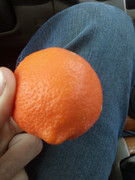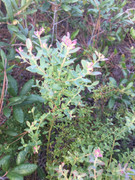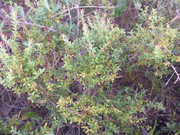35
« on: January 08, 2022, 11:53:51 PM »
I think z6 would be almost unfeasible (not impossible) to breed for something really good but could end up with some good selections for z 7 and 8 with y'all's efforts if they live.
I still stand by my above theory with some modifications
['Ponciris+ x mangschanensis' x mangschanensis'] x ['Moro x navel']
With this, there would be beneficial genes floating around for cold hardiness, anthocyanins, low seediness, low bitter, quality fruit, easy peel, tang (hopefully not excessive). Although, other genes for seediness, small fruit, excess sour also present.
You could substitute mangschanensis with another tangerine that is hardy in the teens F I suppose. I guess 'pure' might not matter too much here but don't discredit that purity could have it's place in some aspects of breeding.
Then navel could perhaps be replaced with something else sweet. I would like to be able to replace navel with minneola, sunburst, cara cara, clementine, Kishu, satsumas, if any of those would even work out nicely. Who is to say the relative sweetness in any of those domestics would even be accurately expressed? anyway I think this general set of genetics could create something really good and still quite cold hardy, but I wouldn't count on z6 exactly.. I would predict the F5 or F6 (basically the end product seedlings of all that hybridization) to probably generally withstand zone 7..
Ponciris+ I assume can withstand somewhere around -15 - -20 F
Satsumas low teens F
Minneola mid teens F
Wash navel & cara cara high teens F
Clementine mid teens F
Sunburst 20F
Mangschanensis probably mid to low teens F
Can one predict general cold hardiness for a batch of hybrid seedlings accurately? For example, could 'PT x wash navel' seedlings be predicted to withstand around 0F since average cold hardiness -20+19/2= -2? I realize cold hardiness traits are inherited not averaged but can it generally be predicted to work out like this with most cold hardy citrus hybrids?







